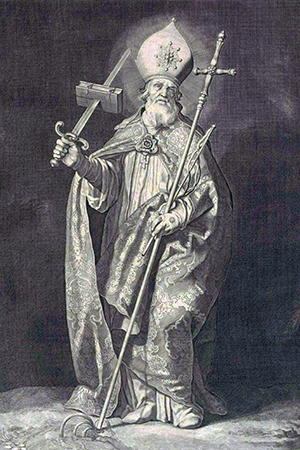Saint Boniface
Feast day June 5

Boniface, who was baptized Winfrid, lived in the eighth century. He was a brilliant monk in a Benedictine monastery in England. He was the head of a school, but he thought God wanted him to be a missionary. He went to Frisia (Northern Netherlands and Germany) to begin his work. A war forced him to return to England for a few years, but he did not give up. Next, he journeyed to Rome to ask the pope to tell him where to serve. Pope Gregory II changed Winfrid’s name to Boniface, which means “a man who does good deeds.” Then he sent Boniface to eastern Germany.

For nearly 35 years, Boniface traveled all over Germany, preaching, teaching, and building schools, monasteries, and convents. He went to Rome to report to the pope about his work. There, the pope ordained him bishop and told him to return to Germany to continue missionary work. Boniface invited monks and sisters from England to come and help him. The monastery at Fulda is probably the most famous one started by Boniface.
As an old man, Boniface returned to Frisia to work among the pagans. One morning, while he was waiting to confirm a group of converts, a band of angry natives rushed into the church and murdered Boniface and about 50 converts. Today Saint Boniface is the patron of Germany.
Suggestions
The nun Lioba and her sisters helped Boniface. Have the students report on other saintly “pairs”:
-
Francis and Clare of Assisi
-
Jerome and Paula
-
Benedict and Scholastica
Excerpted from Christ Our Life, by Sisters of Notre Dame of Chardon, Ohio
Image credit: Saint Boniface by Cornelis Bloemaert, 1630. Public Domain via Wikimedia.

